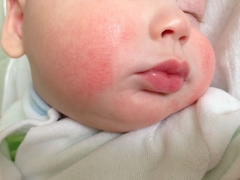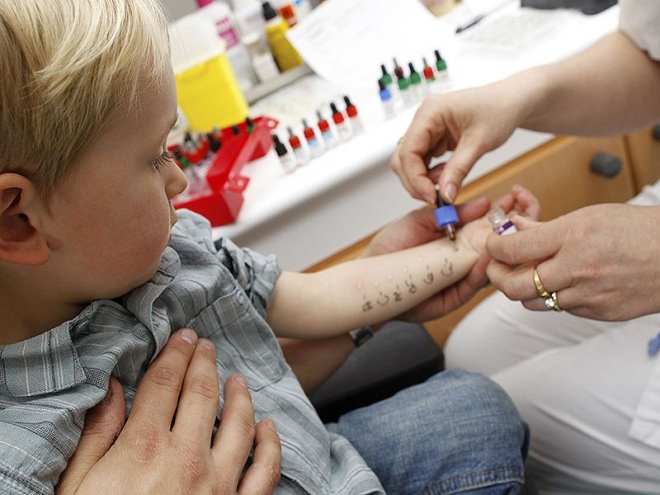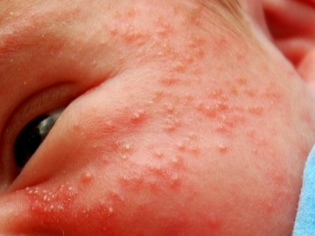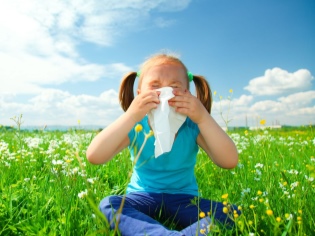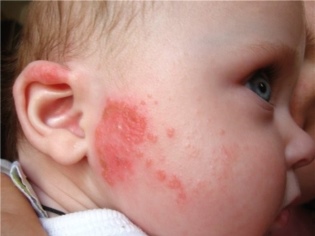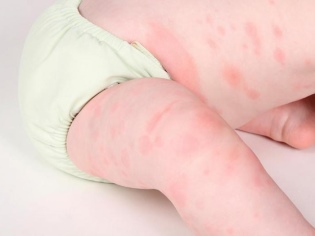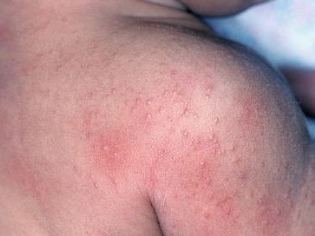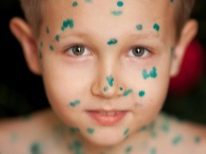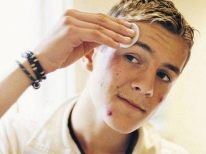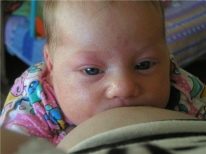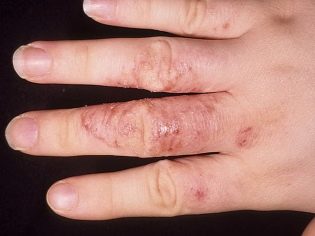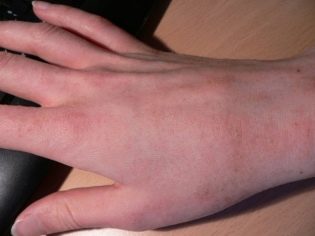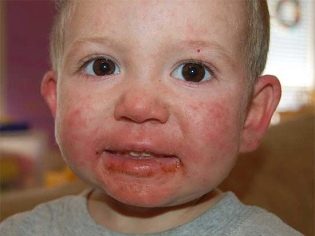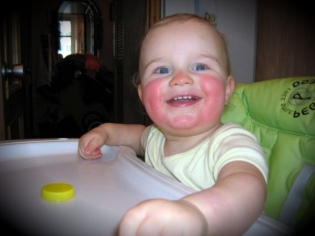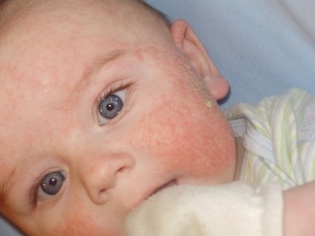What does a baby’s skin allergy look like?
Manifestations of allergic reactions on the skin can occur in every child. To distinguish such a rash from the symptoms of other skin diseases is a very difficult task. It is necessary to understand how to look like an allergy on the skin of a child.
How does it come about?
The development of allergies contribute to foreign substances - allergens. Penetrating into the children's body, they are able to trigger a lot of inflammatory reactions. This process is developing rapidly. Within a few hours after the allergen enters the body, various symptoms begin to appear.
The most dangerous manifestations of allergic reactions in infants. The skin of babies at this age is very delicate and sensitive.
Even a small amount of allergen is enough for the occurrence of allergic rashes.
Kinds
Allergic skin rashes look different. The severity of manifestations largely depends on the age of the baby and the initial level of immunity. An infant may experience more extensive skin lesions and multiple rashes.
The most common allergic manifestations may look like this:
- Pustules These are small cavities that are filled with various contents. In most cases, it is transparent or slightly bloody. When a secondary infection is attached, the fluid that fills the vesicles becomes turbid or has a yellow tint.
- Papules They look like small bumps, towering above the surface of the skin by a few millimeters. These formations do not have a cavity inside. When you touch your finger, you can feel a somewhat uneven surface. The width of the papules may be different, but usually it does not exceed 3-4 mm.
- The plaques. Rise above the skin only a couple of millimeters. They can be of various sizes, reaching even a centimeter in length. They differ in shape and have a fairly clear outline.
- Stains. Differ from healthy skin only in color. Look like bright red elements. Do not rise above the surface of the skin. When you try to feel almost no difference in texture from the skin.
- Vesicles They resemble in appearance small bubbles filled with clear or reddish liquid. Reach in size several millimeters. When touched, they can easily be injured, after which the liquid flows out.
- Bubbles. They look like large vesicles. Usually reach 8-9 mm, and in some cases even more than a centimeter. Inside the bubble is liquid. The epithelial layer that covers the element outside is thin enough. Bubbles are often subject to trauma and secondary infection by bacterial flora.
Symptoms
With the development of skin allergies, numerous skin rashes appear, which can be represented by different types. For allergic urticaria is characterized by the appearance of a rash, which consists of a large number of individual vesicles. When atopic dermatitis occurs allergic spots, and in some cases - papules.
For the development of contact dermatitis is also characterized by the formation of large red spots, which are localized mainly in the areas of contact with the allergen. Allergic eczema is accompanied by the appearance of pustules, and in some cases even blisters filled with bloody fluid. For different forms of allergic pathologies characterized by the development of different types of rashes.
How to distinguish between allergies?
Often the occurrence of manifestations on the skin with allergies is not a specific sign of the disease. In many cases, differential diagnosis is extremely difficult. Most often, allergies can be confused with the following diseases:
- Chicken pox Characterized by the appearance of a profuse rash on almost the whole body. The difference is in the previous history. All babies who sick chickenpox, there was contact with a sick child. Allergies can not be infected (as opposed to infections). Chickenpox is also accompanied by a strong fever and an increase in peripheral lymph nodes, which is not the case in allergic diseases.
- Measles It occurs predominantly in children at preschool age. Characterized by seasonal outbreaks of the disease - mainly in the cold season. Accompanied by a strong increase in body temperature, in some cases - up to 39 degrees. When measles also increases lymph nodes. Contact with a sick child or a visit to a children's educational institution the day before suggests possible measles infection.
- Teen acne. Such skin elements appear mainly on the forehead, as well as on the upper half of the back. They occur in adolescence - without prior contact with any chemicals. In order to precisely exclude allergopathology, additional tests and allergenic tests are required.
- Mistress. It is characterized by the appearance of pink and reddish spots on the body. Localized mainly on the neck and in the folds of the skin. Quite often, heat loss is confused with allergies. The appointment of antihistamines can eliminate doubts. With prickly heat, these drugs do not work.
- Scabby It is characterized by the appearance on the skin of red spots that itch. They are localized mainly in the interdigital spaces. Itching with scabies usually worries at night, and with allergies - during the day. A careful examination of the affected places helps to establish the diagnosis. When scabies visible strong striatedness of the skin pattern, which indicates the presence and active life of subcutaneous mites.
- Deprive. In this disease, areas of redness and excessive desquamation are formed. The diagnosis helps to establish a special analysis. To do this, using a scraping doctor takes a small amount of skin for microscopic examination. This analysis helps to detect pathogens.
- Herpes infection. For herpes is characterized by the appearance on the skin of numerous bubbles filled with a clear liquid. In appearance, they are very similar to allergic vesicles. Most often herpes rash occurs on the mucous membranes of the mouth or genitals. Allergic vesicles can occur on all skin areas.
- Fungal infection. Mostly the fungus affects the scalp, nails, and can also occur on the fingers. On closer examination, one can notice some peculiarity: peeling is noticeably pronounced at the periphery of such spots. Cleansing the skin passes gradually. A positive effect brings only the use of antifungal drugs.
- Insect bites. Often, with such effects, numerous papules are formed, which, with a large number of rashes, can be mistaken for allergic manifestations. If a few days ago the child was in the forest zone or rested in the camp, then the baby should be asked in more detail about possible insect bites.
To establish allergies and exclude all possible diseases that occur with similar symptoms, if you experience skin manifestations, you should definitely show the baby to the doctor. In some cases, only conducting additional tests for allergens helps to clarify the diagnosis.
Learn more about allergies in children - the causes, types and how to deal with it, you will learn from the following video.
